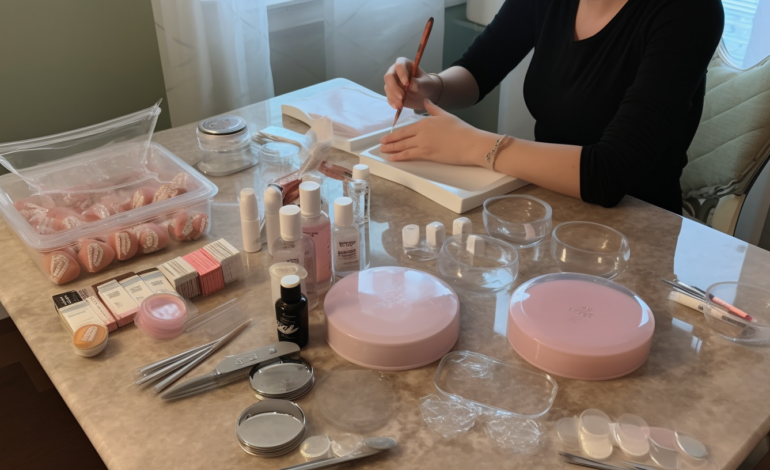
Discovering the Various Kinds of Perfume Notes to Enhance Your Fragrance Knowledge
Perfume has been used for thousands of years to enhance people’s natural scents and make them feel confident and attractive. However, have you ever wondered how your favorite fragrance is made, or what makes it smell so unique? One of the key components of any perfume is the fragrance notes, which are the individual scents that make up the overall fragrance. Understanding the different types of perfume notes can help you make informed decisions when choosing a new fragrance and enhance your overall fragrance knowledge. In this blog post, we will take a closer look at the various kinds of perfume notes and explore their role in creating a unique scent profile.
The Basics of Perfume Notes
Perfume notes are the individual scents that make up a fragrance. They are grouped into three categories: top notes, middle notes, and base notes. Each category has its own characteristics and contributes to the overall scent profile of a perfume.
Top Notes
Top notes are the first scents that you smell when you spray a perfume. They are usually light and fresh and evaporate quickly. Top notes are made up of small, volatile molecules that give a perfume its initial burst of scent.
Common top note fragrances include citrus, bergamot, lemon, grapefruit, orange blossom, and neroli. These fragrances create an invigorating and refreshing scent profile that can awaken your senses.
Middle Notes
After the top notes have evaporated, you will start to smell the middle notes. Middle notes are also called heart notes because they form the heart or main body of a perfume’s scent profile.
Middle note fragrances tend to be more robust than top note fragrances but still have a lightness to them. Common middle note fragrances include lavender, jasmine, rose, ylang-ylang, and geranium. These fragrances create a floral and sweet scent profile that can be both relaxing and uplifting.
Base Notes
Base notes are the final scents that you will smell in a perfume. They are usually rich and deep and provide the foundation for the overall scent profile. Base notes tend to be heavier than middle and top notes and can last for several hours after application.
Common base note fragrances include vanilla, musk, sandalwood, patchouli, and amber. These fragrances create a warm and sensual scent profile that can be both comforting and alluring.
The Challenges of Perfume Notes
While understanding the different types of perfume notes is essential to enhancing your fragrance knowledge, it can also be challenging. One of the biggest challenges is determining which fragrance notes work well together. Perfume ingredients are complex, and even small changes in the ratio of fragrance notes can have a significant impact on the overall scent profile.
Another challenge is finding a fragrance that suits your personal taste. Fragrance preferences are highly subjective, and what smells good to one person may not smell good to another. It’s essential to take your time when choosing a new fragrance and experiment with different scent profiles before settling on one.
The Benefits of Perfume Notes
Despite these challenges, understanding perfume notes has many benefits. Firstly, it helps you choose a fragrance that suits your personality and style. Knowing which scents you prefer (floral, citrusy, woody) can help you narrow down your choices when shopping for a new perfume.
Secondly, understanding perfume notes allows you to appreciate the complexity of fragrances better. Perfumery is an art form that requires a deep understanding of scent families, aromatic compounds, and scent profiles. Knowing how perfumes are made can deepen your appreciation for the artistry that goes into making a fragrance.
Practical Tips for Enhancing Your Fragrance Knowledge
If you want to enhance your fragrance knowledge and become a perfume connoisseur, there are several practical tips you can follow:
- Experiment with different fragrance families: Perfumes are typically classified into four main fragrance families: floral, oriental, woody, and fresh. Try different fragrances from each family to determine which ones you prefer.
- Take note of the notes: When trying a new fragrance, take note of the individual notes that make up the scent profile. This will help you identify which fragrances you like and don’t like.
- Learn about scent profiles: Understanding how top, middle, and base notes work together to create a scent profile is essential to becoming a perfume connoisseur. Take some time to learn about the different types of scent profiles and how they are created.
- Buy samples: Buying full-sized bottles of perfume can be expensive. Consider buying samples or travel-sized bottles to try out new fragrances without committing to a full-sized bottle.
- Trust your nose: Ultimately, choosing a fragrance comes down to personal preference. Trust your nose and choose a fragrance that makes you feel confident and attractive.
Conclusion
Perfume notes are an essential component of any fragrance. Understanding the different types of perfume notes can help you make informed decisions when choosing a new fragrance and enhance your overall fragrance knowledge. While it can be challenging to navigate the complex world of perfumery, following practical tips and experimenting with different fragrances can help you become a perfume connoisseur. Whether you prefer floral, woody, or oriental scents, there is a fragrance out there that will suit your unique personality and style.






